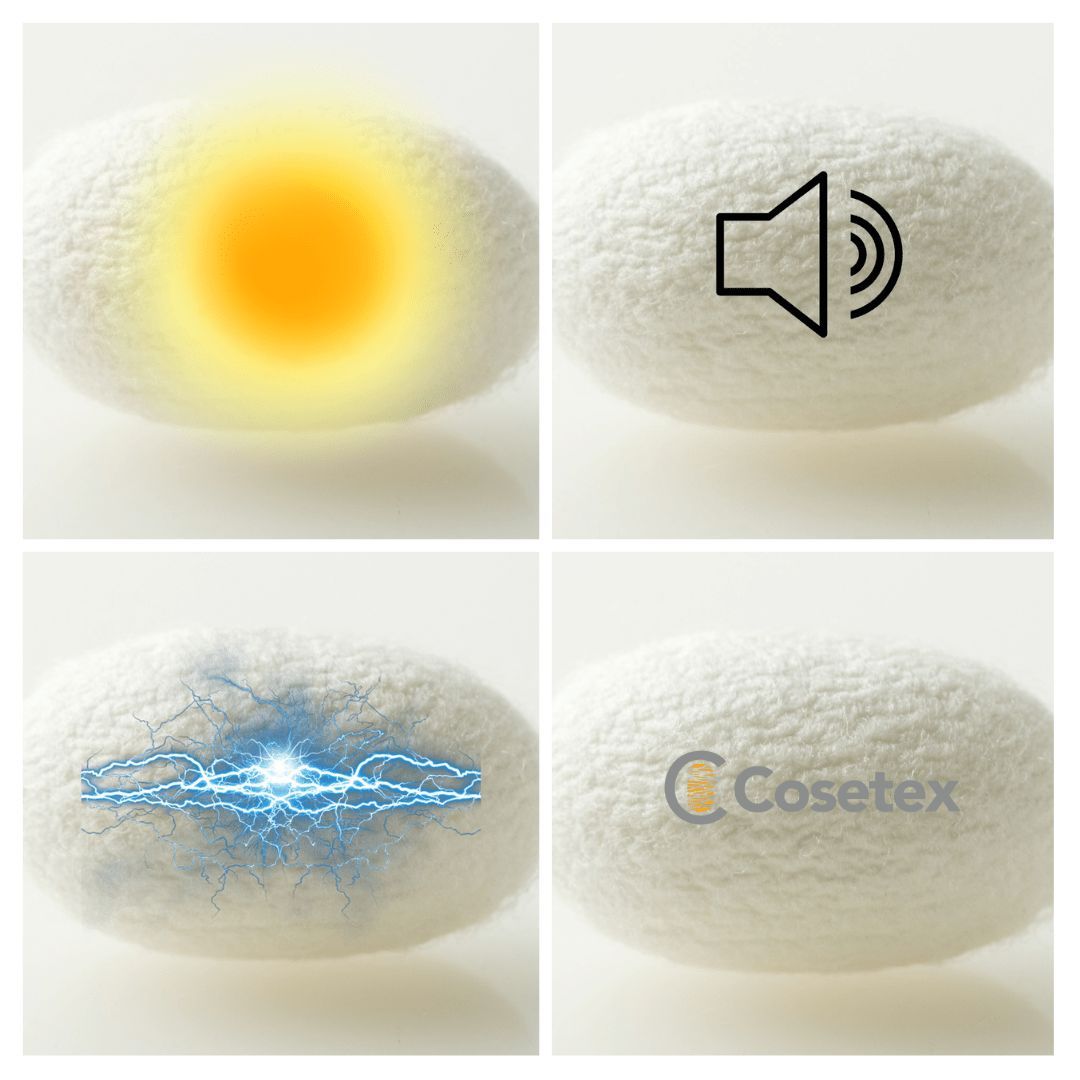Silk – the uniqueness of a natural insulation fiber: thermal, acoustic and electrical
Silk – the uniqueness of a natural insulation fiber: thermal, acoustic and electrical
An insulating and innovative natural textile fibre
Silk is a natural insulation fiber in addition to being a textile fiber and a sustainable natural textile fiber, with exceptional chemical/physical and physiological characteristics, groups within it, which is quite unique in the panorama of textile but also non-textile fibres, an uncommon ability to be simultaneously a thermal insulator, an acoustic insulator and an electrical insulator
The level of well-being, comfort and health that our body perceives and obtains is determined by a series of very differentiated, objective and subjective elements that are conditioned and define places, behaviours and objects with which our body comes into contact. Having a natural textile fibre available that is at the same time an electrical insulator, an acoustic insulator and a thermal insulator represents the most innovative and desirable thing you can ask for in a vision of comprehensive well-being.
Thermal, electrical and acoustic insulation – Definitions
- Thermal insulation – low Lambda conductivity (ratio between the amount of heat that passes through the surface of a material and the temperature difference between two bodies)
- Electrical insulation – dielectric constant er equal to the dielectric constant of the material compared to that of the vacuum e0 (er=e/eo)
- Acoustic insulation sound power transmission coefficient t=17500 /M2f2 M= mass of the barriers f=frequency of the sound wave
Silk is an excellent thermal insulation system
Warm silk
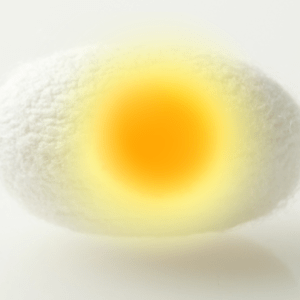
Silk is a phenomenal natural insulation system. A thermal insulator, its components are two natural proteins, Sericin and Fibroin, and the B-Beta molecular sheet structures are able to constitute a barrier to the passage of heat, creating a warm microenvironment.
Warm and breathable silk
The exceptional nature of natural silk fibre goes beyond the aspect of being a thermal insulator. Silk, mainly thanks to the chemical-physical characteristics of the fibrous protein Fibroin, can combine excellent thermal resistance with an equally excellent capacity for transpiration and thermoregulation.
Silk, a thermoregulatory fibre
Silk guarantees full transpiration, as it can capture a considerable amount of heat and moisture within its chemically amorphous phases and at the same time quickly release the excess part into the atmosphere.
This feature allows us, on the one hand, to perfectly regulate the temperature between the wearer and the outside and, on the other hand, to “use” the captured moisture to produce heat through the friction of its molecules.
How thermally insulating silk is used
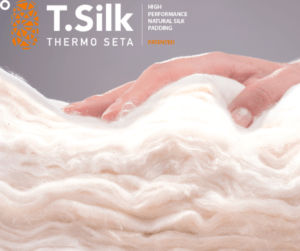
Silk, especially in the patented T.Silk formulation that increases the density of fibroin fibrils per cm2, is the ideal material for padding use, able to guarantee heat and breathability, cool in summer and warm in winter with exceptional thermophysiological comfort.
The combination of thermal, electrical and acoustic insulation characteristics opens up uses of natural silk textile fibre in very different areas, starting from building and construction.
Silk is an excellent electrical insulation system
The discovery
The scientist Stephen Gray, (1666–1736), studied for a long time and discovered electrification by communication, creating a process through which to transmit the electrical property to natural and non-natural textile fibres, ropes and elements of different constitution, demonstrating that a series of metals connected to them could acquire the electrical property of attracting light bodies simply when they were connected to a glass tube containing lead oxide, (Gray’s glass tube), which was rubbed with the hand.
This study made it possible to determine and explore the electricity hidden in metals, discovering and defining conductive and insulating substances and defining electrification as a phenomenon that occurs at a distance capable of being transmitted without direct contact, but only by proximity.
The experiment – The flying boy
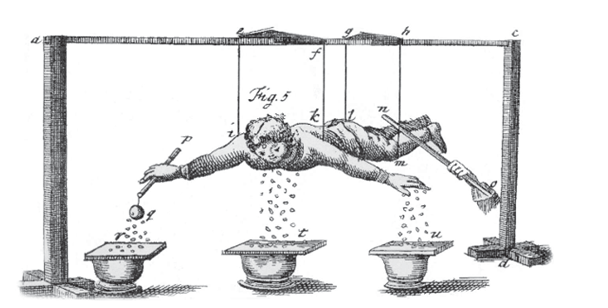
To give scientific evidence of this important aspect, Gray devised what is commonly known as the flying boy experiment:
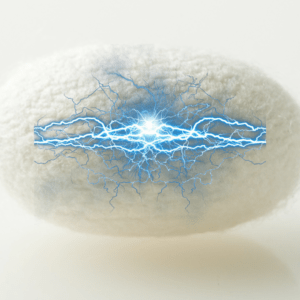
- A boy weighing about 20 kg was suspended horizontally through a series of silk yarns.
- The boy was brought close to Gray’s rubbed glass tube without touching it
- The boy attracted a series of brass leaves that had been placed under him on a floor.
At first, using normal ropes of textile fibers, the experiment did not provide any interesting observation. Subsequently, using silk ropes, confirming their perfect role as electrical insulators, the attraction of the brass leaves immediately manifested itself.
Silk guarantee a natural insulation and , like amber, glass, ceramics and wood, is a perfect electrical insulator.
How electrically insulating silk is used
The flying boy experiment, which is famous in scientific literature, represented the basis for the development of a series of applications that have provided for the use of yarns and silk coatings by virtue of the fact that it is a perfect electrical insulator (innovative and specific conductive cables, automotive, aerospace). Also based on this characteristic of perfect insulation, Tufts University scientists are studying a new generation of transistors and chips with silk fibroin elements to be used as the next digital and medical revolution. (photo source Tufts University)
In clothing and home textiles, the lack of accumulation of electrostatic charges (as can happen with synthetic fibres, which is made evident by the “sparks” that are felt when you take off a garment) is an element that is highly correlated with greater comfort and well-being, as well as being of extreme benefit in situations of risk at work.
*Stephen Gray was born in Canterburry in England in 1666. The son of fabric dyers, he was an amateur scientist who never enrolled in university, but he made an essential contribution to astronomy and the study of electricity. In 1729, at the age of 63, he discovered, publishing in 1731, the fundamental characteristics of insulating and conducting bodies, a fundamental element for the study of electricity in the following years. He was elected a member of the Royal Society in 1732 and was the first to receive the Copley medal of the Royal Society. He died in 1736 in the Charterhouse boarding house, a home for the disadvantaged.
Silk is an excellent acoustic insulation system
The level of comfort and psychophysical well-being are determined, among others, by the acoustic balance of the environments in which we live. Our physical and mental condition is influenced by the sound and noises that come from outside, their intensity and those that are present inside.
Sound waves and surfaces
When sound waves hit a surface, some of the waves are reflected and some are absorbed by penetrating the surface. The reverberation time represents the time it takes to decrease the sound energy by 60 decibels from the moment in which the sound source is turned off. Too long a reverberation will generate the so-called background noise caused by the various reflections that sound waves undergo. Too low a reverberation time will result in an unpleasant background sound.
What is meant by acoustic insulation
When talking about acoustic insulation, it is necessary to distinguish between two types of fundamental characteristics:
- Attenuation of noise from outside
- Acoustic absorption in order to reduce noise inside a room due to an excessive accumulation of sounds
Silk behaves in both situations as a perfect natural insulating textile fiber capable of guaranteeing excellent internal and external acoustic insulation thanks to a series of particular characteristics
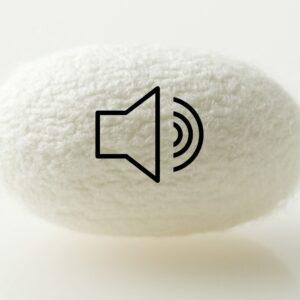
- its chemical-physical conformation with numerous amorphous internal zones
- a high resistance to the passage of air
- a high density of the structure of its constituent proteins
- a high porosity and tortuosity that cage sound waves
- a flexible consistency and an adjustable fibrous structure during processing (carding)
- a good thermal resistance capable of absorbing the heat determined by the absorption of sound waves
- an excellent possibility of adaptation to the characteristics of the premises and to the methods of packaging.
How acoustic insulating silk is used

Silk has always been recognised as a textile fiber with excellent acoustic insulating and sound-absorbing characteristics. In the 1950s, there were numerous projects and attempts to insert it into the elements of construction and building
(Advertising of a sound-absorbing carpet for construction in silk fibres 1950).
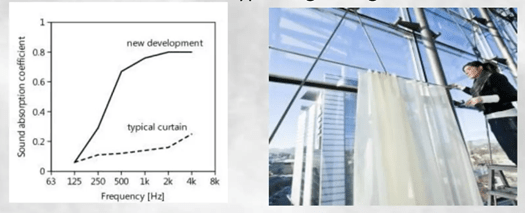
Studies have shown the exceptional sound absorption value of simple silk curtains that, placed about 15 cm from the wall, absorb 5 times more sound waves absorbed by other natural and non-natural textile fibres.
Silk is a natural fibre of excellence
At Cosetex, we have defined it as “The material of the future” and every time we study and research new aspects and potential uses in our activity, we discover excellence that is connected to a highly sustainable and circular agricultural and production system that makes this fibre the oldest innovative fibre on the textile scene.
Searching for naturalness, sustainability and environmental protection in a textile product that guarantees exceptional levels of performance and comfort is no longer absurd. The absurdity could lie in the fact that this fibre is silk, the oldest known fibre.

